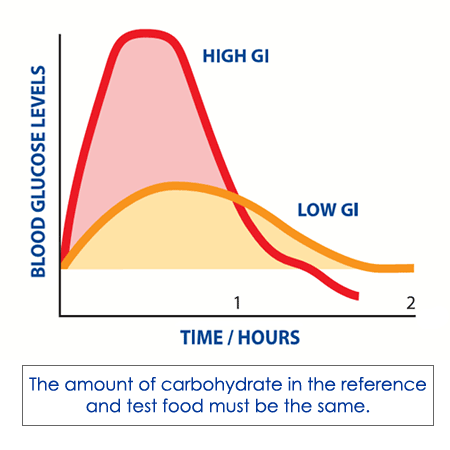Made with under the sun daily.
Made with under the sun daily.
Home » About Glycemic Index
The glycemic index (GI) is a ranking of carbohydrates on a scale from 0 to 100 according to the extent to which they raise blood sugar levels after eating. Foods with a high GI are those which are rapidly digested and absorbed and result in marked fluctuations in blood sugar levels. Low-GI foods, by virtue of their slow digestion and absorption, produce gradual rises in blood sugar and insulin levels, and have proven benefits for health. Low GI diets have been shown to improve both glucose and lipid levels in people with diabetes (type 1 and type 2). They have benefits for weight control because they help control appetite and delay hunger. Low GI diets also reduce insulin levels and insulin resistance.
Recent studies from Harvard School of Public Health indicate that the risks of diseases such as type 2 diabetes and coronary heart disease are strongly related to the GI of the overall diet. In 1999, the World Health Organisation (WHO) and Food and Agriculture Organisation (FAO) recommended that people in industrialised countries base their diets on low-GI foods in order to prevent the most common diseases of affluence, such as coronary heart disease, diabetes and obesity.
To determine a food’s GI value, measured portions of the food containing 50 grams of available carbohydrate (or 25 grams of available carbohydrate for foods that contain lower amounts of carbohydrate) are fed to 10 healthy people after an overnight fast. Finger-prick blood samples are taken at 15-30 minute intervals over the next two hours. These blood samples are used to construct a blood sugar response curve for the two hour period. The incremental area under the curve (iAUC) is calculated to reflect the total rise in blood glucose levels after eating the test food. The GI value is calculated by dividing the iAUC for the test food by the iAUC for the reference food (same amount of glucose) and multiplying by 100 (see Figure 1). The use of a standard food is essential for reducing the confounding influence of differences in the physical characteristics of the subjects. The average of the GI ratings from all ten subjects is published as the GI for that food.
The GI of foods has important implications for the food industry. Some foods on the Australian market already show their GI rating on the nutrition information panel. Terms such as complex carbohydrates and sugars, which commonly appear on food labels, are now recognised as having little nutritional or physiological significance. The WHO/FAO recommend that these terms be removed and replaced with the total carbohydrate content of the food and its GI value. However, the GI rating of a food must be tested physiologically and only a few centres around the world currently provide a legitimate testing service. The Human Nutrition Unit at the University of Sydney has been at the forefront of glycemic index research for over two decades and has tested hundreds of foods as an integral part of its program. Jennie Brand Miller is the senior author of International Tables of Glycemic Index published by the American Journal of Clinical Nutrition in 1995 and 2002 and by Diabetes Care in 2008.

In-text: (“About Glycemic Index“)
“About Glycemic Index”. Glycemicindex.com. N.p., 2016. Web. 6 May 2016.

Founded in Southeast QLD and located on Certified Organic farmland, we are an Australian-made Fresh Spirulina commercial farm. We are subject to the Australia New Zealand Food Standards Code and produce fresh Spirulina using food-grade nutrients only, pay attention to the freshness and health of our spirulina.


Would you like to be notified when we start?



Thanks! You're on the list.
It's safe to close this popup now.